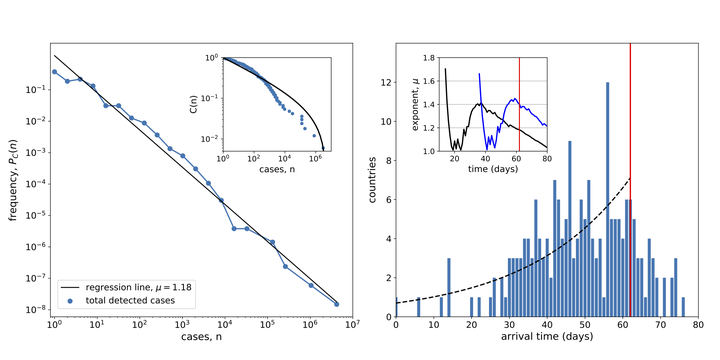
Abstract
COVID-19 is an emerging respiratory infectious disease caused by the coronavirus SARS-CoV-2. It was first reported on in early December 2019 in Wuhan, China and within three months spread as a pandemic around the whole globe. Here, we study macro-epidemiological patterns along the time course of the COVID-19 pandemic. We compute the distribution of confirmed COVID-19 cases and deaths for countries worldwide and for counties in the US and show that both distributions follow a truncated power-law over five orders of magnitude. We are able to explain the origin of this scaling behavior as a dual-scale process: the large-scale spread of the virus between countries and the small-scale accumulation of case numbers within each country. Assuming exponential growth on both scales, the critical exponent of the power-law is determined by the ratio of large-scale to small-scale growth rates. We confirm this theory in numerical simulations in a simple meta-population model, describing the epidemic spread in a network of interconnected countries. Our theory gives a mechanistic explanation why most COVID-19 cases occurred within a few epicenters, at least in the initial phase of the outbreak. By combining real world data, modeling, and numerical simulations, we make the case that the distribution of epidemic prevalence might follow universal rules.